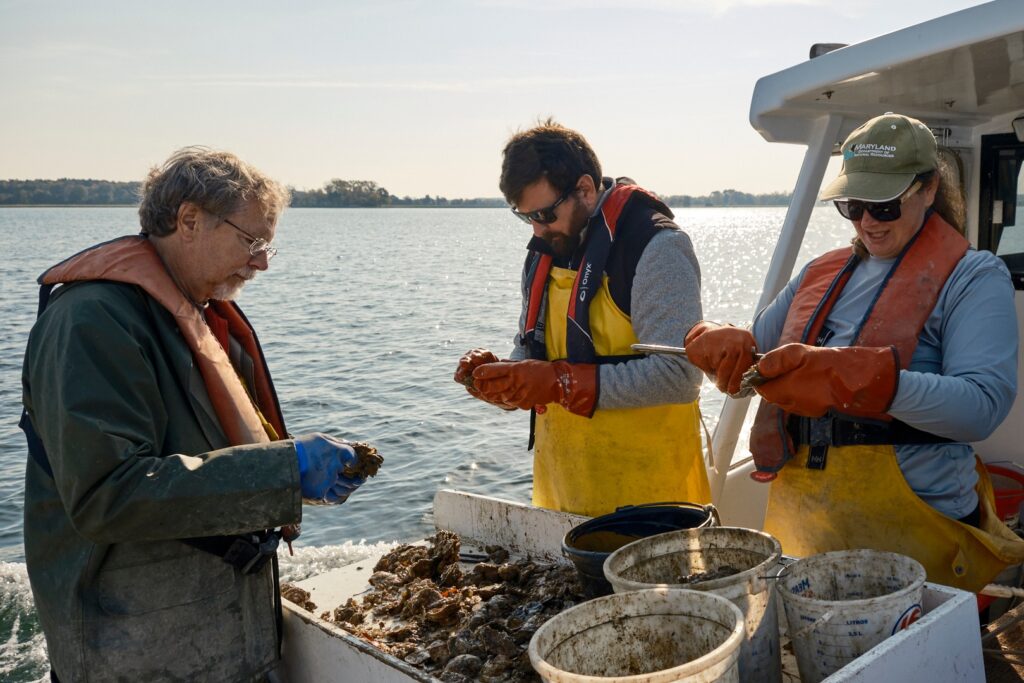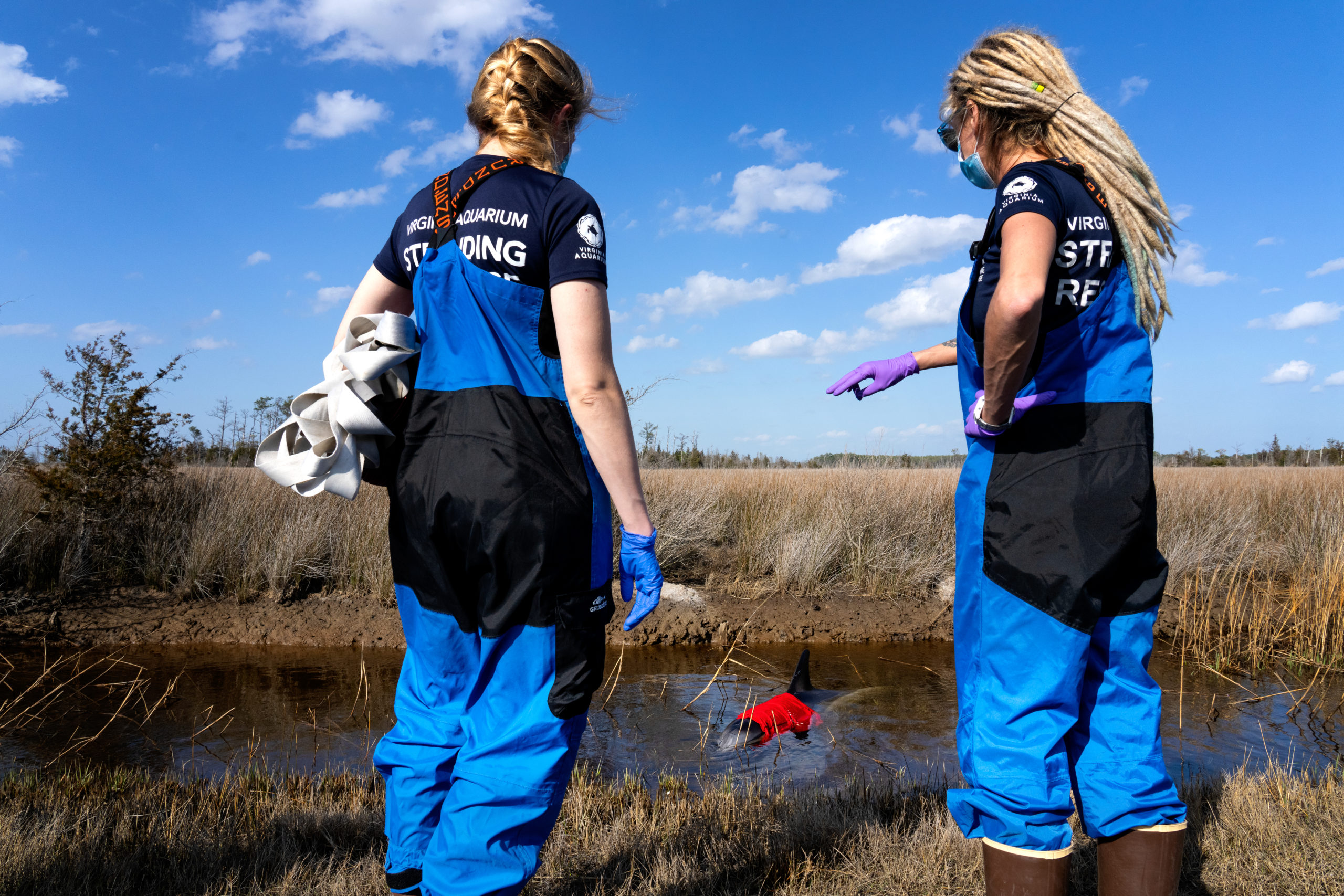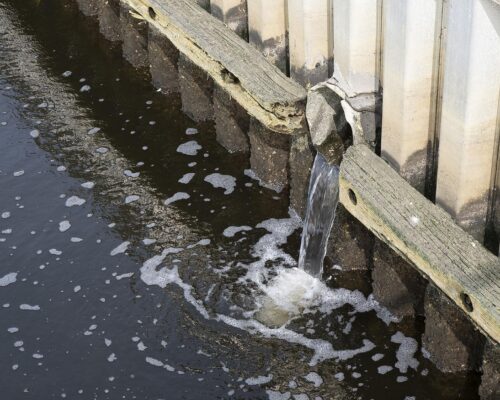The Maryland fall oyster survey finds juvenile oysters, or spat, are thriving throughout the Bay—including in several areas where they have rarely been seen in nearly 40 years.
Both the number of spat and the widespread distribution of them throughout Bay waters are particularly encouraging, according to the Maryland Department of Natural Resources (DNR). The survey results were announced at DNR’s Jan. 9 Oyster Advisory Commission meeting.
DNR Secretary Josh Kurtz calls the survey results “outstanding,” saying, “We have not recorded this extent of oyster spat recruitment in the fall survey in a generation.”
The Fall Oyster Survey determines the year’s the spatfall intensity index, which measures oysters’ reproductive success and their potential for population growth. This year’s index was 86.8 spat per bushel, nearly four times the 39-year median index of 23.6. This year’s index is the fifth highest in all 39 years.
It’s the fourth year in a row that the fall survey index has been ticking higher than the median. It gives hope to state, local and nonprofit partners’ restoration efforts.
In addition to the spatfall intensity index, DNR looks at where the spat are concentrated. In 1997, DNR found the highest spat numbers ever recorded, but they were clustered in just a few areas: the eastern portion of Eastern Bay, the Miles River, the northeast portion of the lower Choptank River, and in parts of the Little Choptank and St. Marys rivers.
In 2023, on the other hand, DNR says the survey turned up spat in the upper reaches of Bay tributaries that are usually too brackish for strong oyster reproduction. Several parts of the Potomac rivershed saw numerous spat: the Wicomico River, Breton Bay, and the area above the Route 301 bridge, where record-high river flows in 2018 and 2019 had decimated the oysters.
There were also positive reports in the Patuxent and Tred Avon rivers along with Eastern Bay. At the same time, areas where spat typically thrive continued to thrive in 2023. That includes the lower Eastern and Western shores along with Broad Creek.
Kurtz says, “We plan to build on these natural spatsets by continuing oyster restoration efforts and promoting aquaculture to bolster the overall oyster population.”
It’s good news for the Bay environment, since oyster provide food for animals, oysters are natural water filters, and their reefs provide habitat for marine life. It’s also good news for watermen and the entire Bay seafood industry.
So, to what does DNR attribute the positive changes? Adequate water salinity played a role, DNR says.
The Chesapeake Bay Foundation agrees. In a statement, Bay Foundation Maryland Executive Director Allison Colden says, “The trend in recovery is likely linked to below average rainfall, which is associated with higher salinity and better oyster reproduction. However, long-term, extensive restoration efforts by state and federal partners can also contribute to cleaner water and increased oyster reproduction throughout the state.”
A key requirement in oyster reproduction is for adult oysters to be clustered close together, since the eggs and sperm are released into the water column and fertilized externally.
Then, as unprotected free-swimming larvae, the babies must seek hard substrate (like the shells of other oysters) to attach and grow. The increase in mature oysters means that larvae have more places to attach. And hopefully, so will the larvae next year and the year after.
“Oysters are unique in that they are environmental engineers, meaning they create their own essential shell habitat as they grow,” says DNR Shellfish Division Director Christopher Judy. “This large influx of young oysters will help build a foundation for more oysters in the future.”
The billions (with a “b”!) of oysters added to Maryland waters by the Oyster Recovery Partnership is, no doubt, also helping build a foundation for baby oysters.
Oyster Recovery Partnership Coastal Restoration Manager, Olivia Caretti says in a statement that the oyster spat-on-shell planted on protected reefs “is succeeding in initiating natural reproduction and settlement of oysters where these processes were limited or did not occur in the recent past.” Caretti explains, “Some locations that received record spatset in 2023, like the Tred Avon River, seem to be benefiting from large-scale restoration within sanctuaries combined with nearby restoration of public oyster bars and aquaculture leases.”
Because oyster larvae don’t distinguish between protected sanctuaries and public oyster bars, restoring oyster habitat in both kinds of management areas will bring the maximum benefit.




